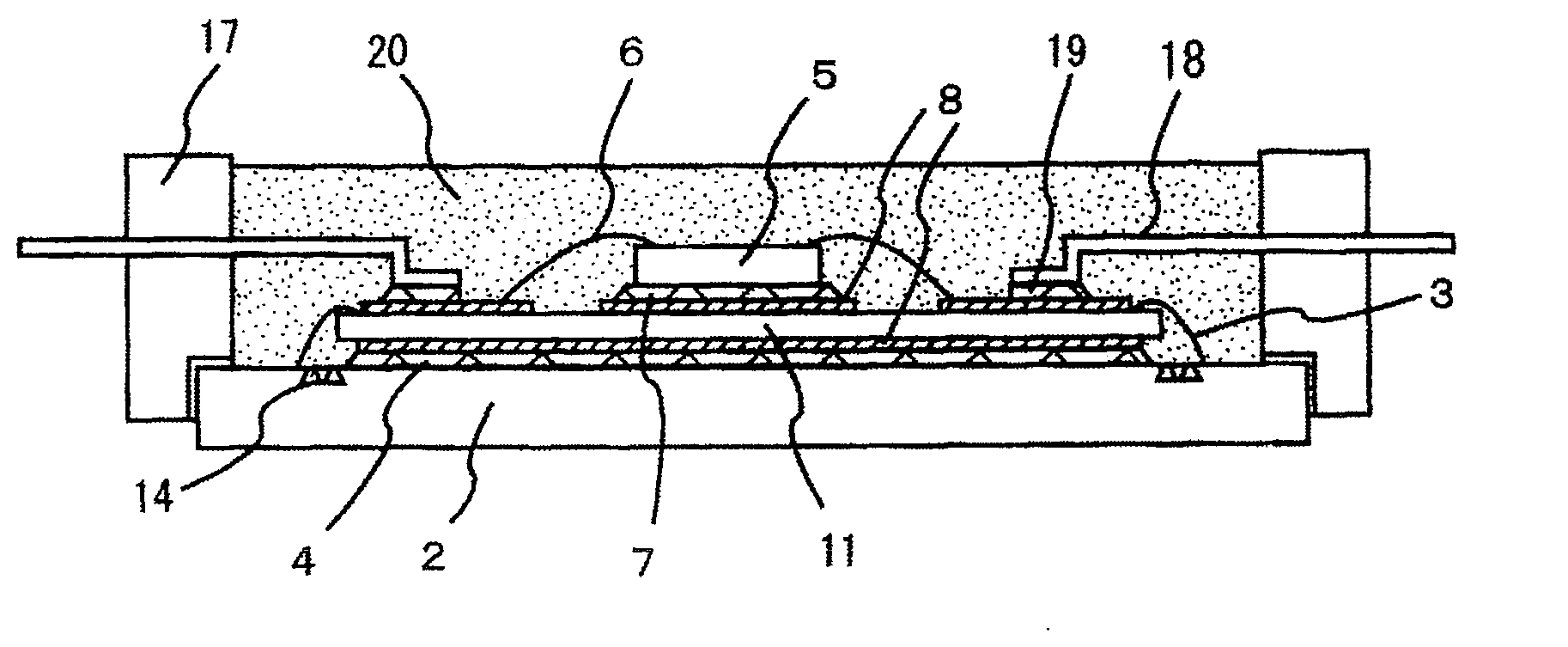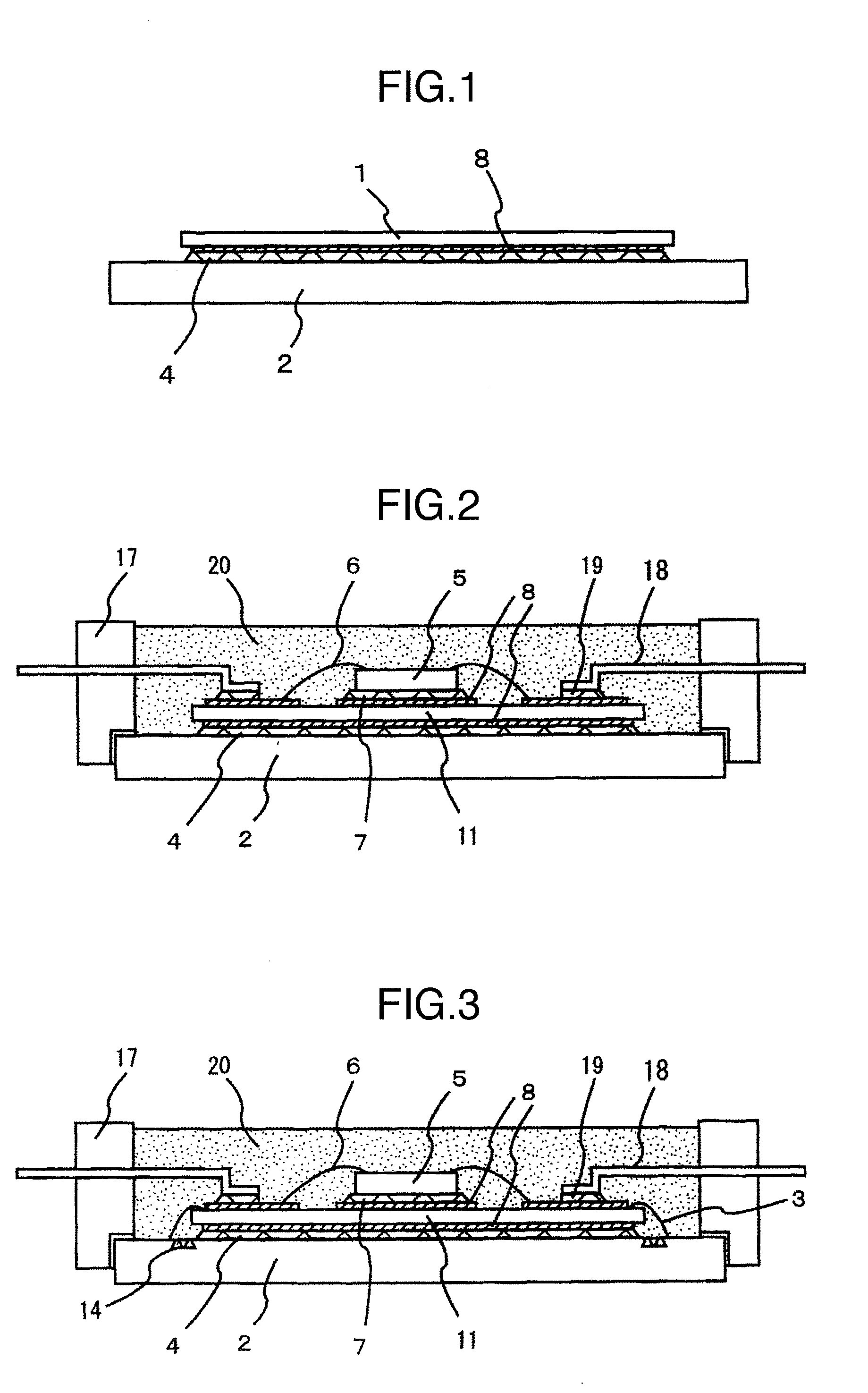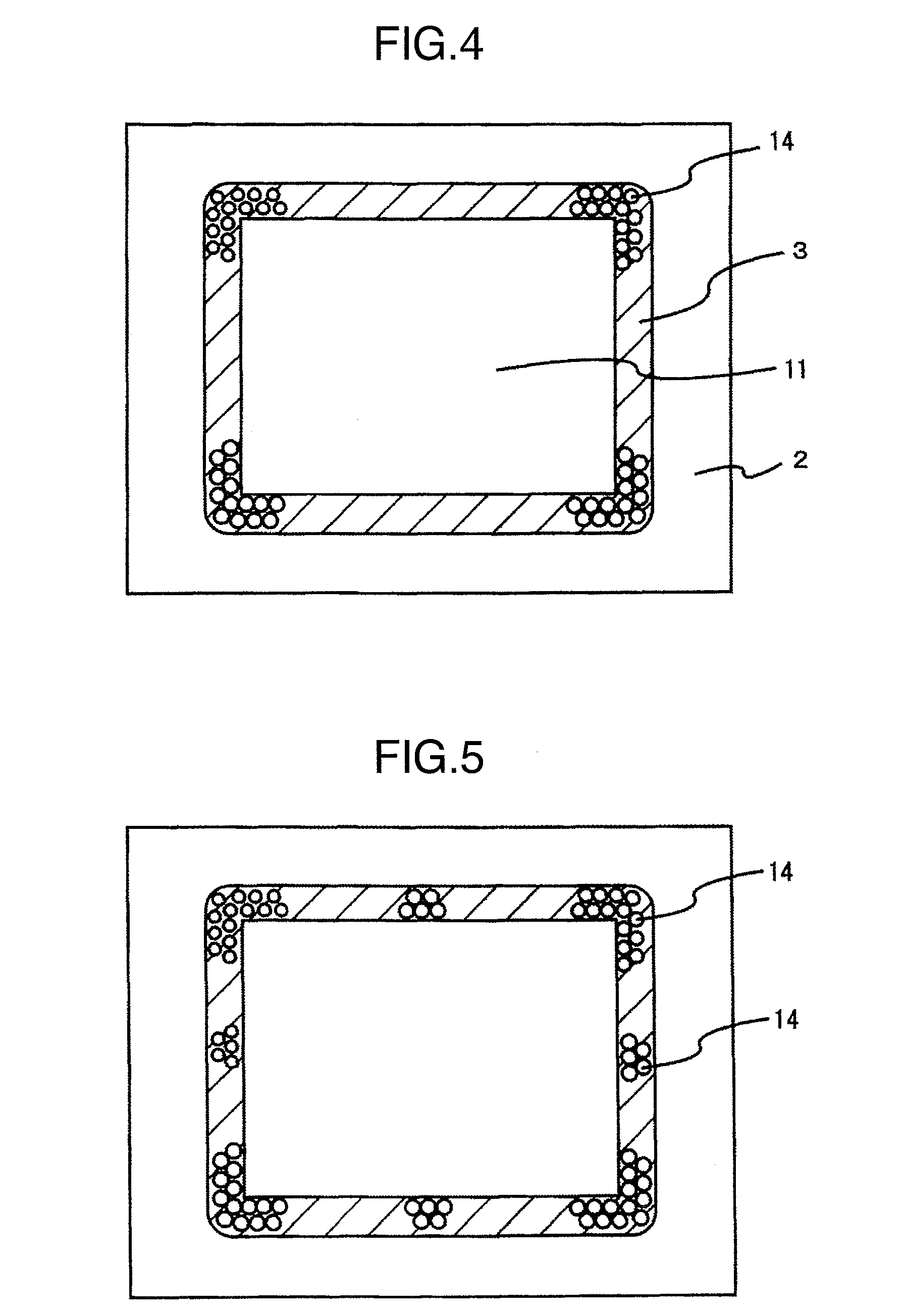Semiconductor power module
a technology of micro-conductor and power module, which is applied in the manufacture of printed circuits, printed circuit aspects, basic electric elements, etc., can solve the problems of long time problems, difficulty in securing reliability, and remarkably reduced life of thermal cycle and tft tests, so as to prevent acceleration of fatigue deterioration, reduce temperature rise, and increase the life of the temperature cycle. remarkably
- Summary
- Abstract
- Description
- Claims
- Application Information
AI Technical Summary
Benefits of technology
Problems solved by technology
Method used
Image
Examples
example 1
[0040]FIG. 1 shows a section of a test evaluation model in which each kind of rolled solder foil of 150 μm is placed between Al2O3 substrate 1 (t0.3) with Cu of 0.3 mm bonded thereon and a Cu base substrate 2 (t4) and reflowed at a soldering temperature of 245° C. at the maximum under a reducing atmosphere.
[0041]Seven kinds of solder foils that are (1) to (7) shown in Table 1, which differ in characteristics, were used, and the thermal cycle test with the module structure was conducted with respect to the promising composition. The composition was such that by including In by 5% in Sn—Ag—Cu solder, the soldering temperature was able to be lowered by about 10° C. as compared with Sn-3Ag-0.5Cu which is the basis for a post-fitting solder 4 of a low temperature, and securing of sufficient strength on the joint interface was considered.
[0042]It is known that In-adding has less adverse effect on joint strength to various kinds of metallization, mechanical characteristics of a bulk materi...
example 2
[0087]Next, as the means for further increasing the temperature cycle life of the connection portion of the ceramic insulating substrate and the Cu base substrate, it is conceivable to coat the joint outer peripheral portion partially with an epoxy resin having proper physical properties and to reinforce it. The reason why the solder added to In is especially used is that the warpage relieving action and the like for the substrate in the soldering process can be expected, and use of the In-added solder leads to enhancement in yield of connection.
[0088]FIG. 2 is an example in which an AlN insulating substrate end portion is not partially reinforced with a resin, and shows a sectional structure of a power module using Pb-free solder of Sn-3Ag-0.5Cu-5In. The module structure itself does not change from the conventional structure. FIG. 3 shows a structure in which an epoxy resin 3 is partially coated on the end portion of an AlN insulating substrate 11 in FIG. 2 to reinforce it.
[0089]In...
example 3
[0094]It has been found out that as long as Pb-free Sn solder is used, the power module cannot withstand the thermal cycle and TFT of the long-time reliability test with only the solder against the thermal fatigue deterioration of the solder between the AlN insulating substrate and the Cu base substrate.
[0095]FIG. 6 shows an example of the form of coating and covering the resin 3 onto the periphery of the solder portion 4 of the AlN insulating substrate 1 and the Cu base substrate 2, which is in the severe condition in terms of thermal fatigue and from which remarkable effect of improvement in enhancement in reliability by a resin can be expected, in the configuration formed by the AlN insulating substrate and the Cu base substrate 2.
[0096]As shown in the drawing, the electrode lead from the chip 5 adopts the wire bond 6 method of the Al wire as in the conventional power module, and is further connected to an external connection terminal lead 18 with a post-fitting solder 19. For so...
PUM
 Login to View More
Login to View More Abstract
Description
Claims
Application Information
 Login to View More
Login to View More - R&D
- Intellectual Property
- Life Sciences
- Materials
- Tech Scout
- Unparalleled Data Quality
- Higher Quality Content
- 60% Fewer Hallucinations
Browse by: Latest US Patents, China's latest patents, Technical Efficacy Thesaurus, Application Domain, Technology Topic, Popular Technical Reports.
© 2025 PatSnap. All rights reserved.Legal|Privacy policy|Modern Slavery Act Transparency Statement|Sitemap|About US| Contact US: help@patsnap.com



